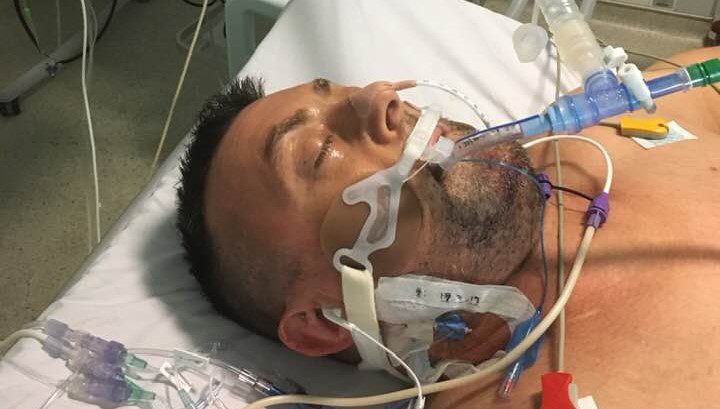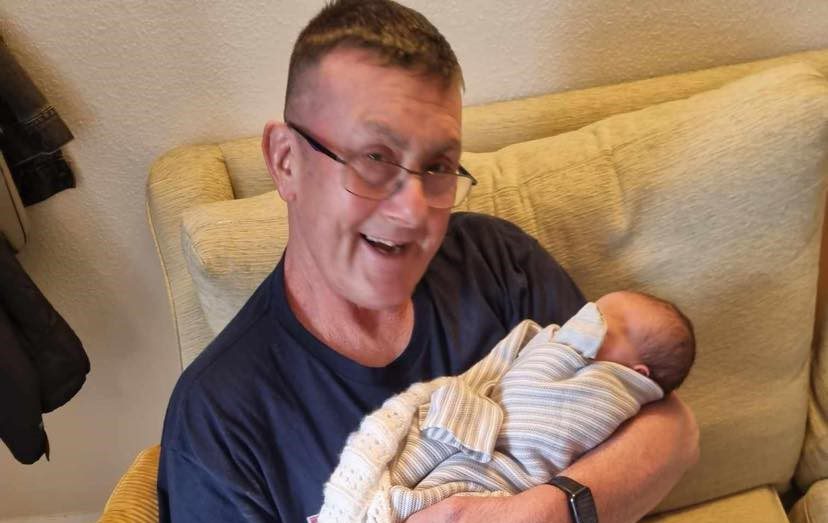Wendy and Steve Varney
Intensive care at the roadside: Wendy's story
“Wednesday 17 July 2019 is a day I’ll never forget. The first I knew that something was wrong was a phone call from my husband’s mobile number. But it wasn’t my husband on the phone. It was a female voice, a police officer. I don’t remember much about that conversation, or the one that followed, other than ‘breathing difficulties … air ambulance … touch and go."
Content warning: Contains images which readers may find upsetting.
We live in Dunstable, Bedfordshire. My husband had been travelling to work on his motorbike, at 50 to 60 miles per hour, when a driver pulled out in front of him. I know that he would not have survived if the air ambulance had not attended that day.
I don’t think I’d ever thought much about air ambulances before Steve’s accident. I think if I had, it was probably along the lines of, ‘They’re a great idea because they get you to hospital quicker’. But it is so much more than that.
Steve is alive today, walking and talking, because East Anglian Air Ambulance is essentially a mobile intensive care unit. The doctor and the critical care paramedic put him into an induced coma on the side of the road. They put him on a ventilator because he could not breathe for himself. They put drains into his chest. They did all the things they needed to do to stop him from dying long for enough to get him to hospital.


Thanks to EAAA, Steve is still the same person that he always was. Without the crew that day, Steve would not have met our two youngest grandchildren. We are both now EAAA volunteers. It is our way of giving a little something back to the charity that gave everything back to us.

— Wendy Varney
And that’s the other benefit of air ambulances that I’d never thought about. It’s not just that they can get you to hospital quickly, it’s that they can get you to the right hospital quickly. It would not have helped to take Steve to the A&E department at our local hospital. They would not have had the skills he needed. The catastrophic nature of his injuries meant that he needed a major trauma centre and that was where the crew flew him to. The combination of intensive care on the roadside followed by intensive care in a major trauma centre is the reason he is alive today.
So, to the final thing I might have thought about air ambulances before, if I’d thought about them at all. I had always assumed that the service is publicly funded. I’d assumed that it was ‘just part of the NHS’ like going to the GP or having a baby. I had no idea that air ambulances are funded almost entirely by charity. When I put money in a collecting box, or sponsored someone to do a parachute jump, I had no idea that this money was funding the service, rather than just paying for some little extras, the ‘nice to haves’. It is charity that pays for the incredible service that saved my husband’s life.
It is now more than four years since that dreadful phone call. It is a very long road to recovery when you have been injured as badly as Steve was. He is strong and determined and has worked really hard on his recovery. There is some lasting damage from his injuries that will never go away, but he refuses to let it hold him back. He still lives life to the full.
Thanks to EAAA, Steve is still the same person that he always was. Without the crew that day, Steve would not have met our two youngest grandchildren. We are both now EAAA volunteers. It is our way of giving a little something back to the charity that gave everything back to us.
Wendy Varney
